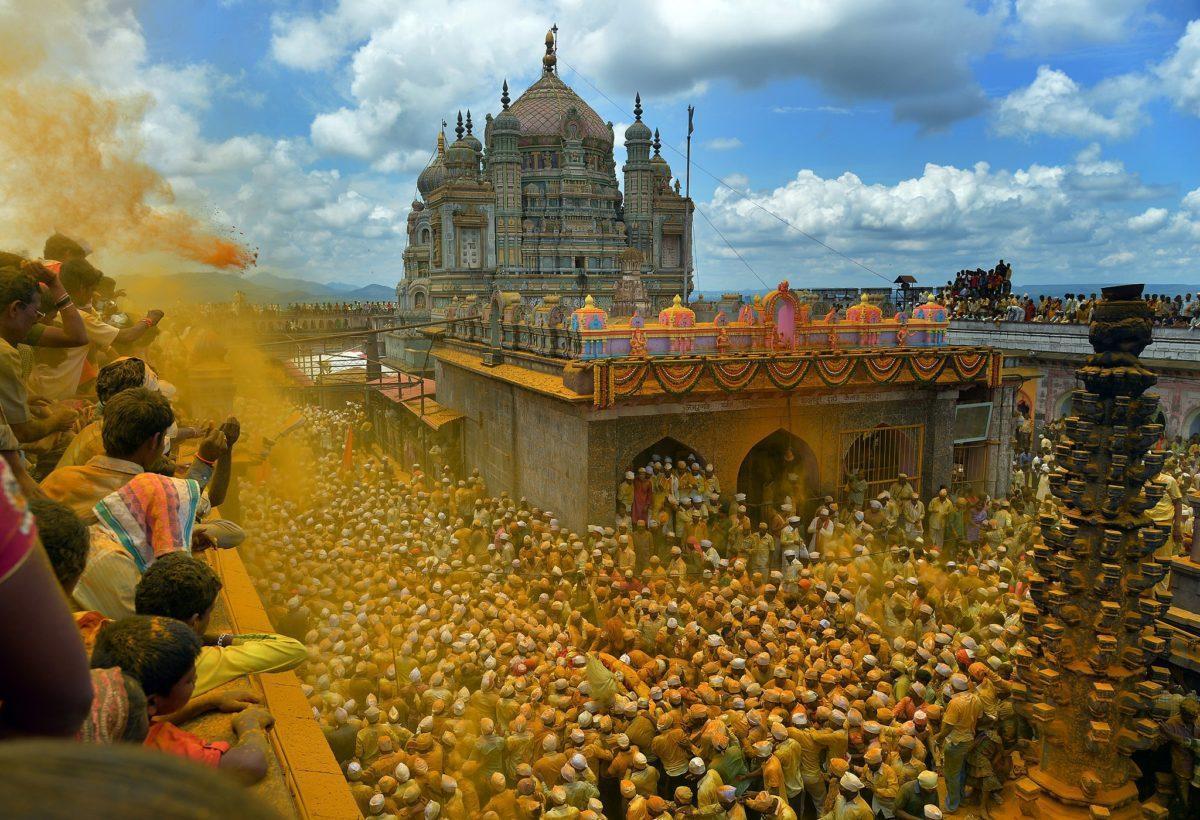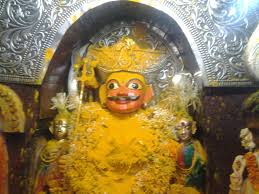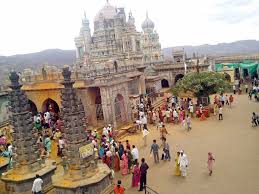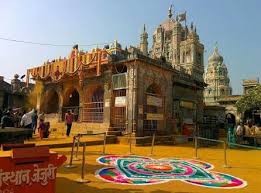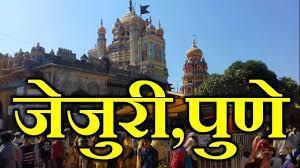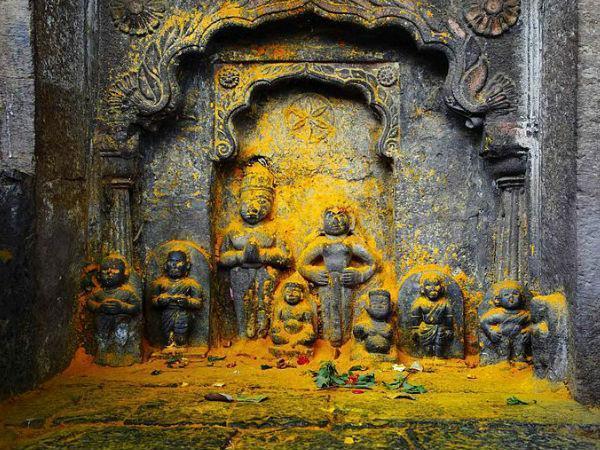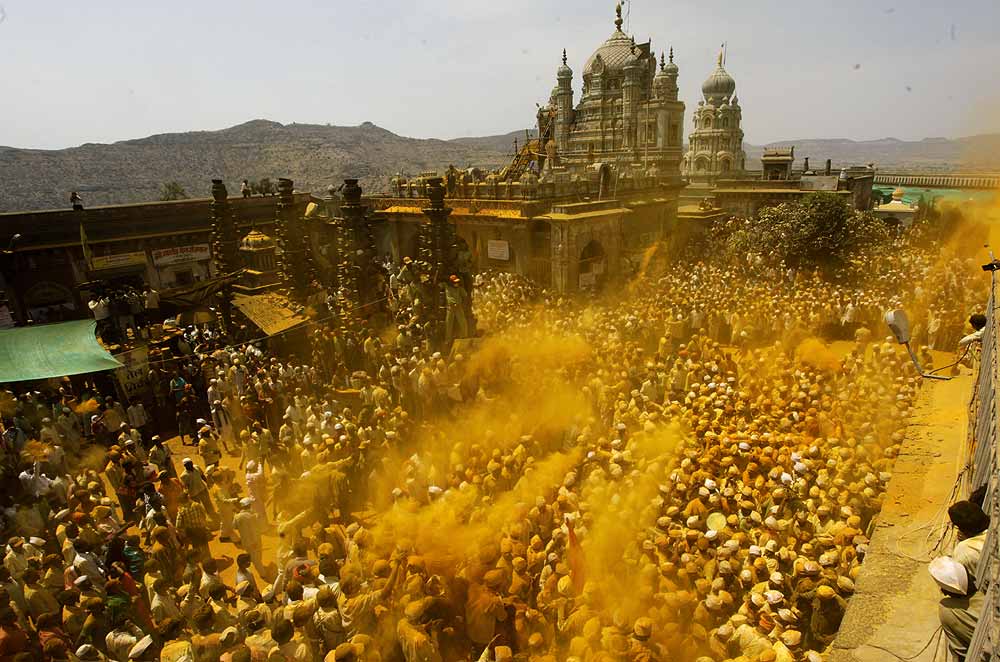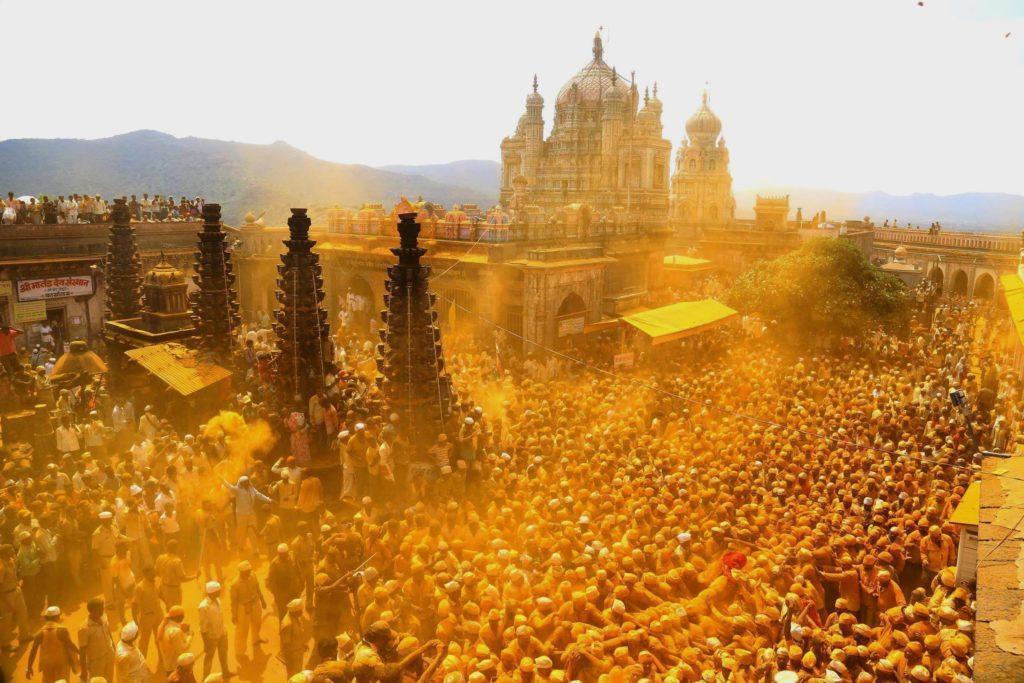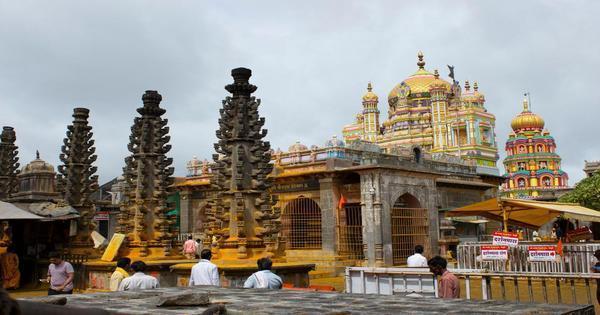Khandoba Temple, also known as Jejuri Temple, is located in the Pune district of Maharashtra. The temple is dedicated to Khandoba, also known as Mhalsakant or Malhari Martand or Mylaralinga. Khandoba is regarded as the ‘God of Jejuri’ and is held in great reverence by the Dhangars.
The town is known for being the venue of one of the revered temples in the state, known as the Khandobachi Jejuri.
Khandoba is the prime deity of farming, shepherd, hunter, tribal, warrior, lingayat and some Brahmin communities. It is a strong belief that Khandoba married women from different communities to indicate the equality of various castes and communities. Khandoba’s fourth wife is said to be a gardener whereas his fifth wife was from oil presser caste. Though Khandoba is not a major deity of Brahmin communities, he is the Kuldevata (family deity) of some Deshastha Brahmin families.
Jejuri is a city and a municipal council in the Pune district in the Indian state of Maharashtra. It is famous for the main temple of Lord Khandoba. It is a famous temple town being the family deity of many houses in Maharashtra and Karnataka. Its economy is centred on businesses catering to the numerous devotees coming to worship the Khandoba Temple there. Recently the increase in property rates and the planning of an international airport near the town has seen a spurt of development happening there.
Rituals
Rituals Related to Khandoba Vaghya is a cult where boys wear a traditional costume and dance in the temple premise. Earlier, there was also a ‘Devadasi system’ where women courtesans called Murali were married to the Lord. Later, this system was abolished. Vegetarian dishes like Puran Poli and Bharit Rodga is given as a religious offering to the God. Goat flesh is offered outside the temple eventhough Khandoba is described as non-vegetarian. Six-day festival in the month of Margashira, Dasara and Chaitra Purnima are the famous festivals celebrated in Khandoba Temple. It is really interesting to visit this hill top temple at Jejuri in Maharashtra.
Architecture
Jejuri Khandoba Temple can be easily divided into two separate sections – the Mandap and Garbhagriha.
Legend / Local stories
In many oral traditions and other literary works, Khandoba is described to be a tribal king and a womaniser. However, some descriptions are derived from Oleographic evidences (kind of block paintings) which are similar to the concept of Shiva, Parvathi and Ganga! Some important paintings indicate to two women in Khandobas life. His first wife is Mhalsa and second wife is Bani or Banubai. The tales say that Mhalsa was not happy with Khadoba’s second marriage to Bani and they fought often over this issue. Many oral traditions also have songs describing their fight!
So, Khandoba is said to have given the upper portion of the hill to his wife Mhalsa and gave the bottom of the hill to Bani. Interestingly, the temple of Bani is located at the foot of the hill. Sanskrit texts connect the trio of Khandoba, Mhalsa and Bani to Lord Shiva, Parvathi and Ganga. However, the folklore suggests that Khandoba was a womaniser, he had five wives and many concubines.
The temple was the site of a historic treaty between Tarabai and Balaji Bajirao on 14 September 1752
Photo Gallery
How to Reach:
Jejuri is around 50km from Pune. It is well-connected to other parts of the state. Visitors can take government-run buses from Pune or hire private cabs to reach Jejuri.
- Jejuri Railway Station is the nearest railway station to Khandoba Temple. You can also board trains from places like Pune and Mumbai to reach Jejuri.
- Pune Airport is the nearest airport to the town of Jejuri.

